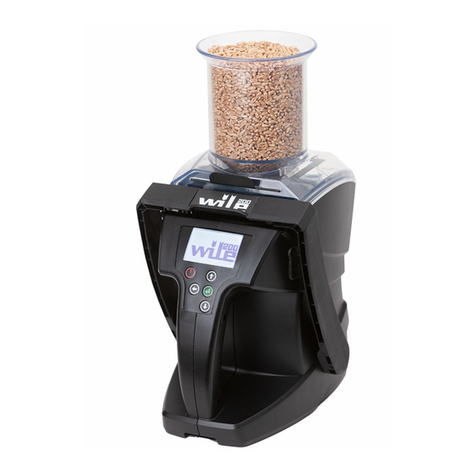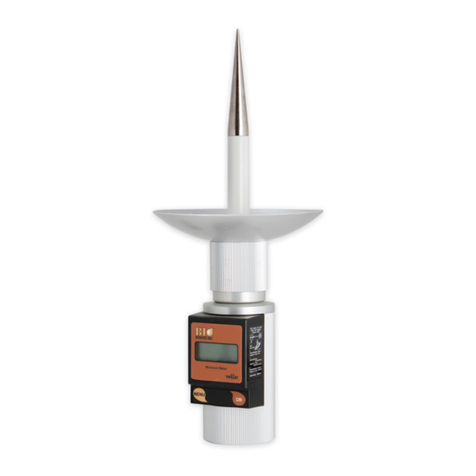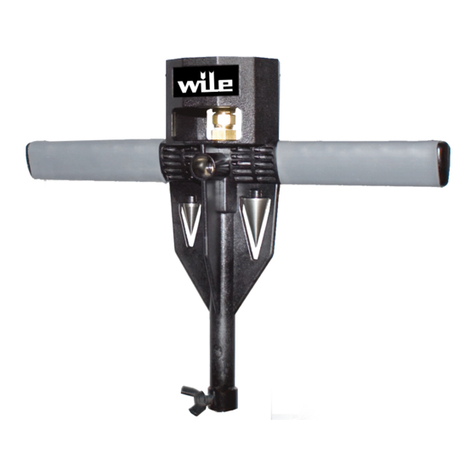8
9 Cleaning and Maintenance
Store the meter in a dry place, protected from direct sunlight. Remove the battery before
long term storage. There are no user serviceable parts inside the device. Do not remove the
screws and open the device.
9.1 Cleaning
The device may be cleaned by wiping with a damp cloth. Do not use strong detergents or
running water.
The tip of the probe must be kept clean and dry to retain measurement accuracy. The tip
should be wiped dry and clean immediately after use, before it becomes difficult to clean.
Stubborn stains may be removed by gently wiping with a damp soft scouring pad.
9.2 Quick Calibration
Moisture measurement accuracy may be improved by periodically performing the quick cal-
ibration procedure. We recommend it to be done at least always after storage. It is more
important for measurement of dry bales than wet.
If you often measure bales whose core temperature is very high or very low, it may be ben-
eficial to calibrate near the bale temperature. To do this, leave the probe inside such bale for
e.g. 15 minutes, and calibrate immediately after pulling it out.
Quick calibration is performed as follows:
1. Verify that the probe is clean and dry.
2. Power on and select “CALIBRATION” in the settings menu.
3. Hold the tester so that the entire probe is surrounded only by clean, dry air with no
objects closer than 30 cm to the probe in any direction. Do not touch the probe.
4. Start calibration by pressing the ekey.
Result of the quick calibration will be stored to memory. It will be effective until the next quick
calibration, or factory calibration duringservice or until you reset factory defaults (see chapter
9.5).
NOTE: Incorrectly performed calibration may weaken measurement accuracy signifi-
cantly!
9.3 Factory Calibration
Authorized Wile service can perform full factory calibration, where the device is checked and
calibrated at its entire moisture range. Push force measurement and temperature measure-
ment will be checked and firmware may be updated.
9.4 Updates
Wemay publish firmware updates that improve measurement accuracy or usability. Updates
are installed via the USB port using a personal computer. Updates and update instructions
will become available on our web page at http://wile.fi.
9.5 Factory Reset
If the meter does not function as expected for example, if you have chosen a language
that you do not understand factory default settings may be restored as follows: Power off
































